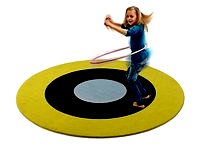Colour rendering
100
80
60
40
20
0
Ra
84
R4
83
R8
66
R2
90
R6
87
R10
77
R12
62
R1
82
R5
82
R9
12
R3
97
R7
87
R11
82
R13
84
R14
98
R15
84
CRI / Ra ≥ 80 (4000 K)
100
80
60
40
20
0
Ra
92
Re
88
R4
92
R8
86
R2
94
R6
90
R10
84
R12
70
R1
91
R5
91
R9
63
R3
94
R7
95
R11
91
R13
92
R14
96
R15
92
CRI / Ra ≥ 90 (4000 K)
100
80
60
40
20
0
Re
96
Ra
98
R4
96
R8
98
R2
98
R6
99
R10
95
R12
91
R1
98
R5
99
R9
92
R3
94
R7
99
R11
94
R13
98
R14
95
R15
98
CRI / Ra ≥ 95, Re ≥ 95 (3000 K)
EN The colour fidelity of light sources is evaluated accor-
ding to the CIE 13.3 international colour rendering rating.
The test light source is compared with a reference light
source using 15 selected test colours. The more accura-
tely the test light source reproduces the test colour, the
higher the colour rendering index Ra (a for German allge-
mein, meaning general).
The mean value of the first eight test colours (R1 – R8)
produces the colour rendering index. This average value is
divided into moderately good colour rendering CRI 70 – 80,
e.g. for street lighting; good colour rendering CRI 80 – 90,
e.g. for workplace lighting; and excellent colour rendering
CRI 90 – 100, e.g. for museums, retail, and medical ex-
aminations. The minimum requirement defined in lighting
standard EN 12464-1 is CRI ≥ 80. The values of the test col-
ours R9 – R15 provide information about the colour fidelity
of the saturated colours (R9 – R12), skin colour (R13), leaf
green (R14), and Asian skin tone (R15). The average value
of all 15 test colours, which is called R(1 – 15), is used when
evaluating colour reproduction beyond the minimum nor-
mative requirements. Consideration of the R(1 – 15) value
is only sensible if the quality requirements are very high,
starting from CRI ≥ 90. If the R(1 – 15) value is ≥ 90 when
CRI is also ≥ 90, this is an excellent light source. An R(1 – 15)
of ≥ 95 indicates the highest light quality.
Example
Example
Example
XAL 22
982
DE Die Farbtreue von Lichtquellen wird nach der inter-
nationalen Farbwiedergabebewertung CIE 13.3 bewertet.
Dabei wird die Testlichtquelle mit einer Referenzlichtquelle
anhand von 15 ausgewählten Testfarben verglichen. Je
genauer die Testlichtquelle die Testfarbe wiedergibt, desto
höher ist der Farbwiedergabe index Ra (a für allgemein).
Der Mittelwert der ersten acht Testfarben (R1 – R8) ergibt
den Farbwiedergabeindex Ra. Dieser Mittelwert wird ein-
geteilt in: mäßig gute Farbwiedergabe Ra 70 – 80, z.B. für
Straßenbeleuchtung; in gute Farbwiedergabe Ra 80 – 90,
z.B. für Beleuchtung von Arbeitsstätten und in sehr gute
Farbwiedergabe für Ra 90 – 100, z.B. für Museen, Retail und
ärztliche Untersuchungen. Die Mindestanforderung der
Beleuchtungsnorm EN 12464-1 ist mit Ra ≥ 80 festgelegt.
Die Werte der Testfarben R9 – R15 geben Auskunft über
die Farbtreue der gesättigten Farben (R9 – R12), der Haut-
farbe (R13), von Blattgrün (R14) und über den asiatischen
Hautfarbton (R15). Um die Farbwiedergabe über die nor-
mative Mindestanforderung hinaus zu bewerten, kann der
Mittelwert aller 15 Testfarben angegeben werden, der mit
Re bezeichnet wird. Die Betrachtung des Re-Wertes ist nur
bei sehr hohen Qualitätsansprüchen sinnvoll, beginnend
mit Ra ≥ 90. Ist bei einem Ra ≥ 90 der Re-Wert auch ≥ 90
handelt es sich um eine sehr gute Lichtquelle. Die höchste
Lichtqualität ist mit einem Re von ≥ 95 angegeben.
∞
back







